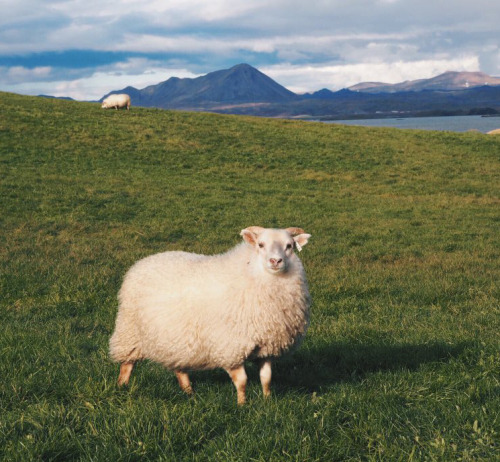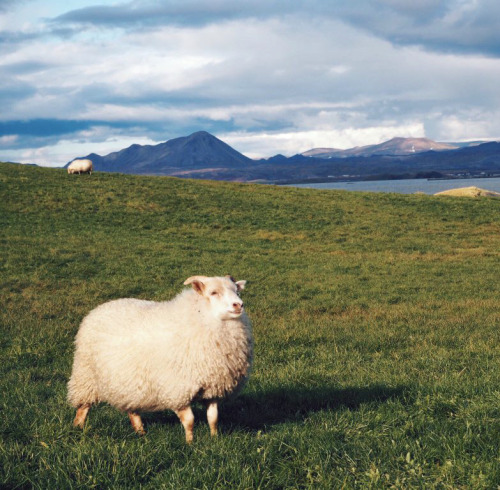The Watcher Pride Collection Is Now Up On Http://watcherstore.com! We’ll Be Donating A Portion Of The



The Watcher Pride Collection is now up on http://watcherstore.com! We’ll be donating a portion of the proceeds directly to The Trevor Project. #LoveEverybody 🏳️🌈
More Posts from Laloidemurphyxx and Others

I love stxrmborn writing so much and her writing made my writing skills much better. Go read Seventeen by stxrmborn on Wattpad
In a Warming World, NASA’s Eyes Offer Crucial Views of Hurricanes
June 1 marks the start of hurricane season in the Atlantic Ocean. Last year’s hurricane season saw a record-setting 30 named storms. Twelve made landfall in the United States, also a record. From space, NASA has unique views of hurricanes and works with other government agencies -- like the National Oceanographic and Atmospheric Administration (NOAA) -- to better understand individual storms and entire hurricane seasons.

Here, five ways NASA is changing hurricane science:
1. We can see storms from space
From space, we can see so much more than what’s visible to the naked eye. Among our missions, NASA and NOAA have joint satellite missions monitoring storms in natural color -- basically, what our eyes see -- as well as in other wavelengths of light, which can help identify features our eyes can’t on their own. For instance, images taken in infrared can show the temperatures of clouds, as well as allow us to track the movement of storms at night.

2. We can see inside hurricanes in 3D
If you’ve ever had a CT scan or X-ray done, you know how important 3D imagery can be to understanding what’s happening on the inside. The same concept applies to hurricanes. Our Global Precipitation Measurement mission’s radar and microwave instruments can see through storm clouds to see the precipitation structure of the storm and measure how much total rain is falling as a result of the storm. This information helps scientists understand how the storm may change over time and understand the risk of severe flooding.
We can even virtually fly through hurricanes!

3. We’re looking at how climate change affects hurricane behavior
Climate change is likely causing storms to behave differently. One change is in how storms intensify: More storms are increasing in strength quickly, a process called rapid intensification, where hurricane wind speeds increase by 35 mph (or more) in just 24 hours.
In 2020, a record-tying nine storms rapidly intensified. These quick changes in storm strength can leave communities in their path without time to properly prepare.
Researchers developed a machine learning model that could more accurately detect rapidly intensifying storms.

It’s not just about how quickly hurricanes gain strength. We’re also looking at how climate change may be causing storms to move more slowly, which makes them more destructive. These “stalled” storms can slow to just a few miles an hour, dumping rain and damaging winds on one location at a time. Hurricane Dorian, for example, stalled over Grand Bahama and left catastrophic damage in its wake. Hurricanes Harvey and Florence experienced stalling as well, both causing major flooding.

4. We can monitor damage done by hurricanes
Hurricane Maria reshaped Puerto Rico’s forests. The storm destroyed so many large trees that the overall height of the island’s forests was shortened by one-third. Measurements from the ground, the air, and space gave researchers insights into which trees were more susceptible to wind damage.

Months after Hurricane Maria, parts of Puerto Rico still didn’t have power. Using satellite data, researchers mapped which neighborhoods were still dark and analyzed demographics and physical attributes of the areas with the longest wait for power.

5. We help communities prepare for storms and respond to their aftermath
The data we collect is available for free to the public. We also partner with other federal agencies, like the Federal Emergency Management Agency (FEMA), and regional and local governments to help prepare for and understand the impacts of disasters like hurricanes.
In 2020, our Disasters Program provided data to groups in Alabama, Louisiana, and Central America to identify regions significantly affected by hurricanes. This helps identify vulnerable communities and make informed decisions about where to send resources.

The 2021 Atlantic hurricane season starts today, June 1. Our colleagues at NOAA are predicting another active season, with an above average number of named storms. At NASA, we’re developing new technology to study how storms form and behave, including ways to understand Earth as a system. Working together with our partners at NOAA, FEMA and elsewhere, we’re ready to help communities weather another year of storms.
Bonus: We see storms on other planets, too!
Earth isn’t the only planet with storms. From dust storms on Mars to rains made of glass, we study storms and severe weather on planets in our solar system and beyond. Even the Sun has storms. Jupiter’s Great Red Spot, for instance, is a hurricane-like storm larger than the entire Earth.

Make sure to follow us on Tumblr for your regular dose of space: http://nasa.tumblr.com.

waltz of the hour cover
do not steal use or claim it as yours
made using ibis paint x




carin 2020 Tiana Tolstoi photoshoot gifs.






Babe wake up, Miranda Cosgrove meme updated
iconic!!!!


Drake & Josh, Mindy Loves Josh (S04E03 / Oct 22, 2006) iCarly (2021), iFauxpologize (S01E03 / Jun 17, 2021)








make me choose: anonymous asked — prisoner of azkaban or order of the phoenix?
happiness can be found even in the darkest of times, if one only remembers to turn on the light.



just friends don't say what we say - Just friends; Audrey Mika
Just set the record, baby you are not the one - Y U gotta be like that;Audrey Mika
I don't sit and wait for you to tell me you're not like the other boys - Boys aint it; Say grace, Tate McRae and Audrey Mika
-
 decadentarbiterpuppy liked this · 9 months ago
decadentarbiterpuppy liked this · 9 months ago -
 ace-665 liked this · 1 year ago
ace-665 liked this · 1 year ago -
 iluvbunnys liked this · 1 year ago
iluvbunnys liked this · 1 year ago -
 merinjuana liked this · 1 year ago
merinjuana liked this · 1 year ago -
 vexedcreature liked this · 1 year ago
vexedcreature liked this · 1 year ago -
 alpacacatghosts liked this · 1 year ago
alpacacatghosts liked this · 1 year ago -
 amazing-sp1der-man reblogged this · 1 year ago
amazing-sp1der-man reblogged this · 1 year ago -
 kpoppersblog liked this · 2 years ago
kpoppersblog liked this · 2 years ago -
 monoistrash liked this · 2 years ago
monoistrash liked this · 2 years ago -
 kayrielwrites liked this · 2 years ago
kayrielwrites liked this · 2 years ago -
 believingfaeries reblogged this · 2 years ago
believingfaeries reblogged this · 2 years ago -
 retailther4py liked this · 2 years ago
retailther4py liked this · 2 years ago -
 oldmanpusspuss liked this · 2 years ago
oldmanpusspuss liked this · 2 years ago -
 ruby-the-bunger liked this · 2 years ago
ruby-the-bunger liked this · 2 years ago -
 stabby-stabby-yall liked this · 2 years ago
stabby-stabby-yall liked this · 2 years ago -
 the-electric-monk liked this · 2 years ago
the-electric-monk liked this · 2 years ago -
 geniepuppet reblogged this · 2 years ago
geniepuppet reblogged this · 2 years ago -
 cyber-flight liked this · 2 years ago
cyber-flight liked this · 2 years ago -
 gusbootybus liked this · 2 years ago
gusbootybus liked this · 2 years ago -
 saturdaymournings liked this · 2 years ago
saturdaymournings liked this · 2 years ago -
 gaylordlady liked this · 2 years ago
gaylordlady liked this · 2 years ago -
 ring-ring-hello liked this · 2 years ago
ring-ring-hello liked this · 2 years ago -
 j-c-laredo liked this · 2 years ago
j-c-laredo liked this · 2 years ago -
 pinkpeony1 liked this · 2 years ago
pinkpeony1 liked this · 2 years ago -
 ezpear liked this · 2 years ago
ezpear liked this · 2 years ago -
 loralynne liked this · 2 years ago
loralynne liked this · 2 years ago -
 yourockthebeatofmyheart liked this · 2 years ago
yourockthebeatofmyheart liked this · 2 years ago -
 notimportant555 liked this · 2 years ago
notimportant555 liked this · 2 years ago -
 maghnolias liked this · 2 years ago
maghnolias liked this · 2 years ago -
 bebidocrimes liked this · 2 years ago
bebidocrimes liked this · 2 years ago -
 rockymoriartea reblogged this · 2 years ago
rockymoriartea reblogged this · 2 years ago -
 rockymoriartea liked this · 2 years ago
rockymoriartea liked this · 2 years ago -
 wazzuppy liked this · 2 years ago
wazzuppy liked this · 2 years ago -
 aurea-corde liked this · 2 years ago
aurea-corde liked this · 2 years ago -
 pickles4lunch liked this · 3 years ago
pickles4lunch liked this · 3 years ago -
 pavoling liked this · 3 years ago
pavoling liked this · 3 years ago -
 thedollarstoresatan liked this · 3 years ago
thedollarstoresatan liked this · 3 years ago -
 vennnuus liked this · 3 years ago
vennnuus liked this · 3 years ago -
 unstoppablecass reblogged this · 3 years ago
unstoppablecass reblogged this · 3 years ago -
 unstoppablecass liked this · 3 years ago
unstoppablecass liked this · 3 years ago -
 fuckjeffbezoslives liked this · 3 years ago
fuckjeffbezoslives liked this · 3 years ago -
 jessicainreallife reblogged this · 3 years ago
jessicainreallife reblogged this · 3 years ago -
 humanwithcottagecheese liked this · 3 years ago
humanwithcottagecheese liked this · 3 years ago -
 iheartnightwing liked this · 3 years ago
iheartnightwing liked this · 3 years ago -
 nogoinghomegame reblogged this · 3 years ago
nogoinghomegame reblogged this · 3 years ago




